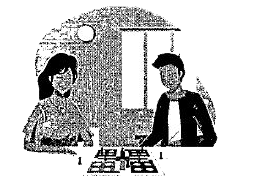Sherlin and Danju are playing Ludo at home during Covid-19. While rolling the dice, Sherlin's sigter Raji observed and noted the possible outcomes of the throw every time belongs to set {1, 2, 3, 4, 5, 6). Let A be the set of players while B be the set of all possible outcomes.

Let R:B→B be defined by R = {(x, y): y is disivible by x} is :
Reflexive and transitive but not symmetric
Reflexive and symmetric and not transitive
Not reflexive but symmetric and transitive
Equivalence
The correct Answer is:A
Topper's Solved these Questions
- RELATIONS AND FUNCTIONS BOOK - ICSECHAPTER - RELATIONS AND FUNCTIONS EXERCISE - MULTIPLE CHOICE QUESTIONS (ASSERTION AND REASON BASED QUESTIONS)
7 Videos
- QUESTION PAPER-2018BOOK - ICSECHAPTER - QUESTION PAPER-2018EXERCISE - Section -C
8 Videos
- SAMPLE PAPER - 4 BOOK - ICSECHAPTER - SAMPLE PAPER - 4 EXERCISE - Questions (Section C)
8 Videos
Similar Questions
Sherlin and Danju are playing Ludo at home during Covid-19. While rolling the dice, Sherlin’s sister Raji observed and noted the possible outcomes of the throw every time belongs to set {1,2,3,4,5,6}. Let A be the set of players while B be the set of all possible outcomes.

A = {S, D}, B = {1,2,3,4,5,6}
Let R:B→B be defined by R={(x,y):y in divisible by x} is
View SolutionSherlin and Danju are playing Ludo at home during Covid-19. While rolling the dice, Sherlin’s sister Raji observed and noted the possible outcomes of the throw every time belongs to set {1,2,3,4,5,6}. Let A be the set of players while B be the set of all possible outcomes.

A = {S, D}, B = {1,2,3,4,5,6}
Let R:B→B be defined by R={(1,1),(1,2), (2,2), (3,3), (4,4), (5,5),(6,6)}, then R is
View Solution
Knowledge Check
Set of all possible outcomes of an experiment is called its
Auniversal setBsample spaceCpartitionDdomainLet Z be the set of all integers and let R be a relation on Z defined by a R b⇔ (a-b) is divisible by 3. then R is
AReflexive and symmetric but transitiveBReflexive and transitive but not symmetricCsymmetric and transitive but not reflexiveDAn equivalence relationLet A be the set of human beings in a town at a particular time.A relation R on set A is defined as R = { (x,y): x is younger than y } . Then R is
Areflexive symmetric but not transitive.Bsymmetric transitive but not reflexiveCan equivalence relationDneither reflexive nor symmetric nor transitive .
Sherlin and Danju are playing Ludo at home during Covid-19. While rolling the dice, Sherlin’s sister Raji observed and noted the possible outcomes of the throw every time belongs to set {1,2,3,4,5,6}. Let A be the set of players while B be the set of all possible outcomes.

A = {S, D}, B = {1,2,3,4,5,6}
Let R be a relation on B defined by R = {(1,2), (2,2), (1,3), (3,4), (3,1), (4,3), (5,5)}. Then R is
View SolutionSherlin and Danju are playing Ludo at home during Covid-19. While rolling the dice, Sherlin’s sister Raji observed and noted the possible outcomes of the throw every time belongs to set {1,2,3,4,5,6}. Let A be the set of players while B be the set of all possible outcomes.

A = {S, D}, B = {1,2,3,4,5,6}
Raji wants to know the number of relations possible from A to B. How many numbers of relations are possible?
View SolutionSherlin and Danju are playing Ludo at home during Covid-19. While rolling the dice, Sherlin’s sister Raji observed and noted the possible outcomes of the throw every time belongs to set {1,2,3,4,5,6}. Let A be the set of players while B be the set of all possible outcomes.

A = {S, D}, B = {1,2,3,4,5,6}
Raji wants to know the number of functions from A to B. How many number of functions are possible?
View SolutionWhen a dice is rolled, what are all the possible outcomes?
View SolutionLet Z be the set of all integers and let R be a relation on Z defined by aRb⇔(a−b) is divisible by 3. then .R is
View Solution
